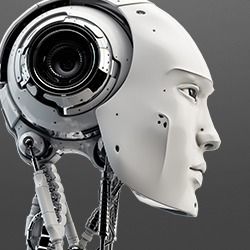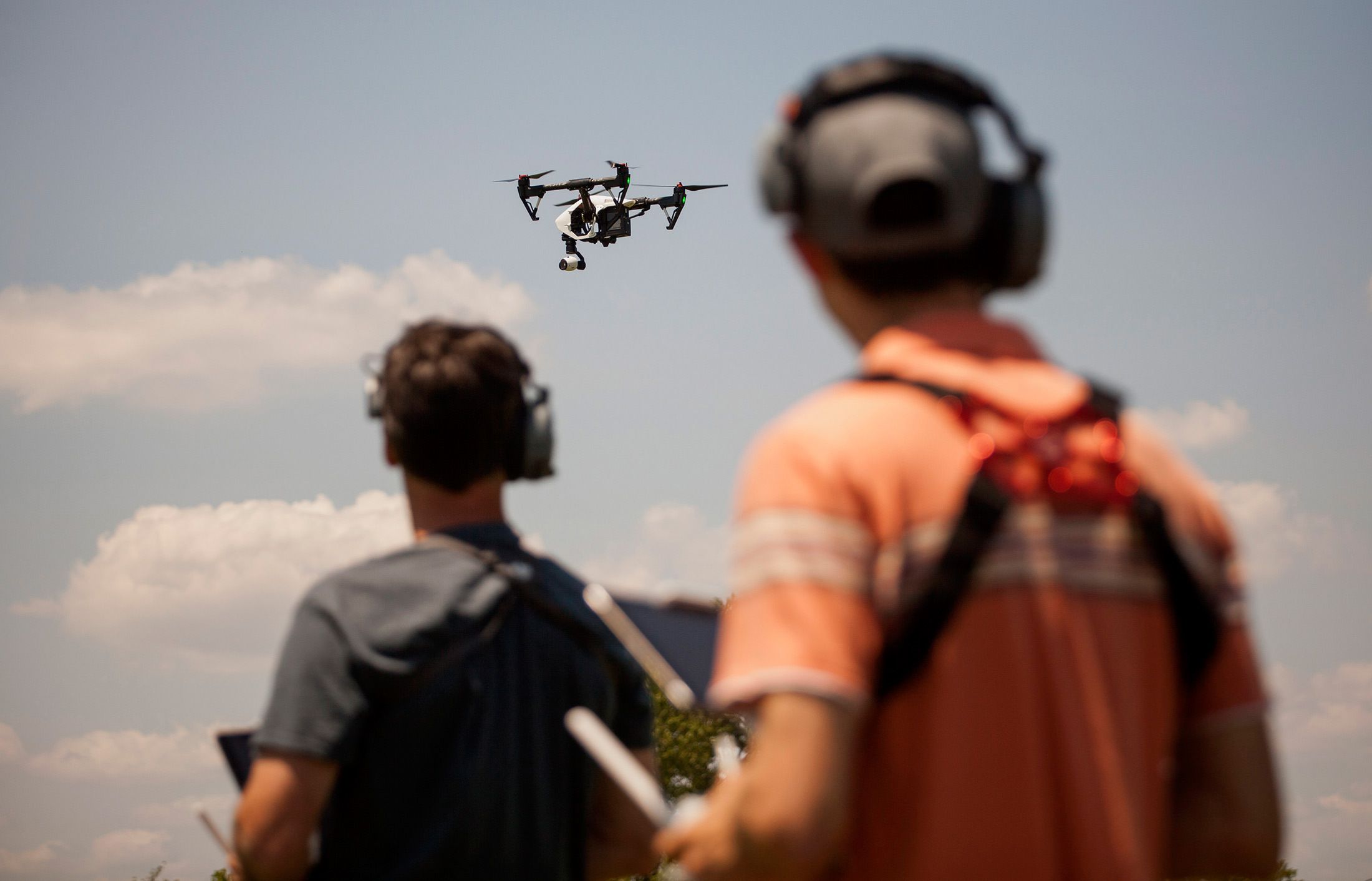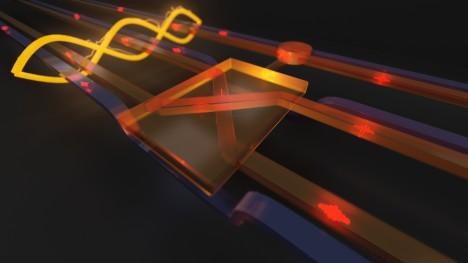Page 11591
Mar 28, 2016
Watch a man manipulate George Bush’s face in real time
Posted by Shailesh Prasad in categories: entertainment, media & arts
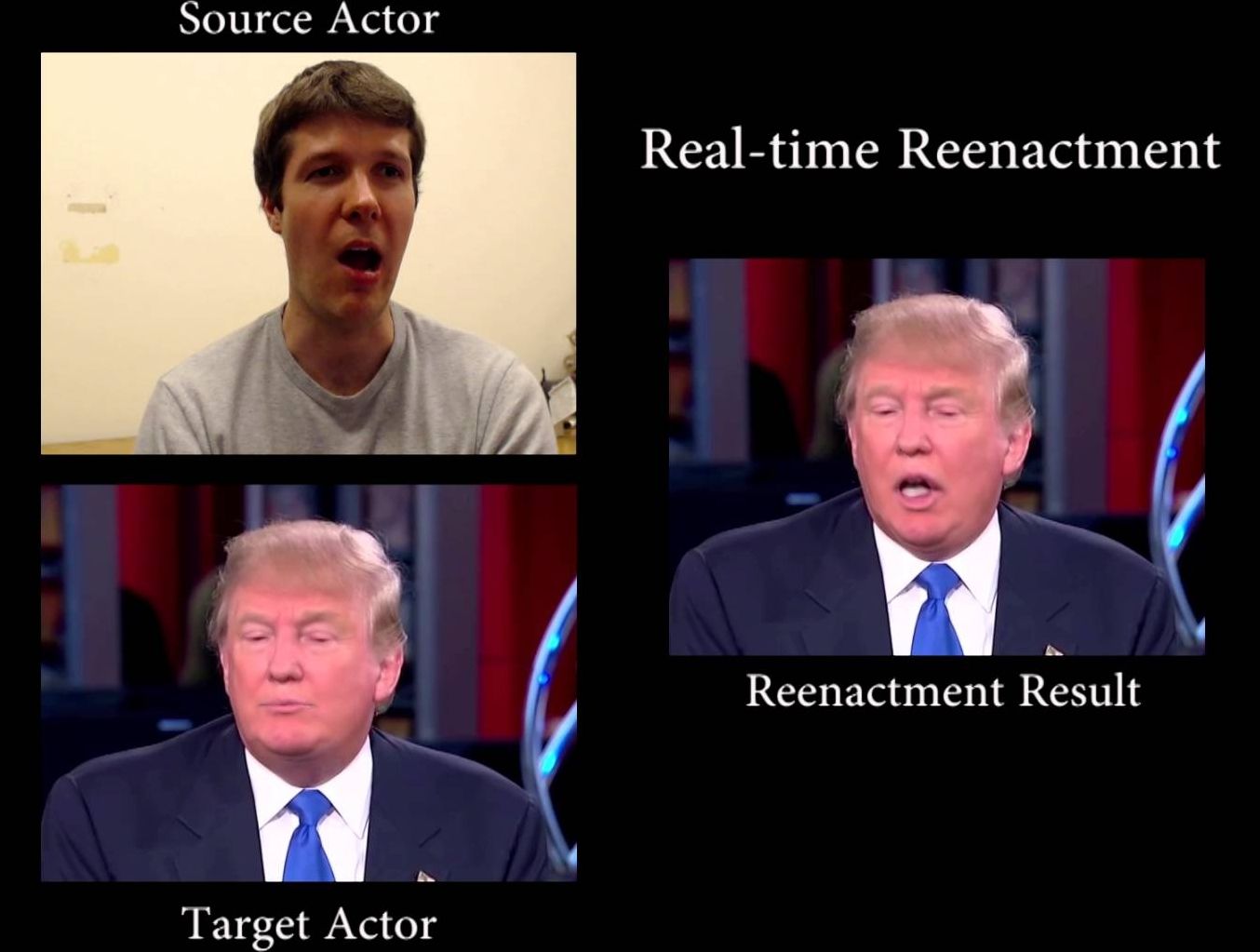
You know that scene in the classic film Bruce Almighty when Jim Carrey uses his God-like powers to mess with Steve Carrell’s character while he’s giving a live news broadcast? That’s what this video looks like (kind of), except replace Steve Carrell for George W. Bush, Donald Trump, Vladimir Putin, and Barack Obama, and Jim Carrey for a team of wily researchers.
The system was designed by researchers from the University of Erlangen-Nuremberg, Max-Planck-Institude for Informatics, and Stanford University. The same team worked on a similar facial expression transfer project last year, but that involved controlling the expressions of someone in the same room. This time they’re doing it with YouTube videos. First, the “target actor” (that’s Bush, Trump, Putin, and Obama) is rendered with a neutral expression. Then, the expressions of the source actor (that’s the other guy) are captured via webcam, and those expressions control the animation in the YouTube video.
Continue reading “Watch a man manipulate George Bush’s face in real time” »
Mar 28, 2016
IBM wants to accelerate AI learning with new processor tech
Posted by Shailesh Prasad in categories: robotics/AI, supercomputing
Deep neural networks (DNNs) can be taught nearly anything, including how to beat us at our own games. The problem is that training AI systems ties up big-ticket supercomputers or data centers for days at a time. Scientists from IBM’s T.J. Watson Research Center think they can cut the horsepower and learning times drastically using “resistive processing units,” theoretical chips that combine CPU and non-volatile memory. Those could accelerate data speeds exponentially, resulting in systems that can do tasks like “natural speech recognition and translation between all world languages,” according to the team.
So why does it take so much computing power and time to teach AI? The problem is that modern neural networks like Google’s DeepMind or IBM Watson must perform billions of tasks in in parallel. That requires numerous CPU memory calls, which quickly adds up over billions of cycles. The researchers debated using new storage tech like resistive RAM that can permanently store data with DRAM-like speeds. However, they eventually came up with the idea for a new type of chip called a resistive processing unit (RPU) that puts large amounts of resistive RAM directly onto a CPU.
Mar 28, 2016
U.S. Says 7 Million Drones Will Take to Skies Annually
Posted by Shailesh Prasad in categories: business, drones, robotics/AI, transportation
Annual sales of drones in the U.S. will hit 2.5 million this year and swell to 7 million by 2020, according to a projection from the Federal Aviation Administration.
Unmanned aircraft purchases are growing both for hobbyists and for commercial ventures that perform inspections, assist farmers, and survey construction sites, according to the agency’s annual forecast of aviation activity, released on Thursday.
Mar 28, 2016
Quantum Computers Move Closer To Reality With ‘Fredkin Gate’ Breakthrough
Posted by Aleksandar Vukovic in categories: computing, quantum physics
The development of the logic gate had long been a stumbling block in the creation of functional quantum computers.
Mar 28, 2016
Nature-Inspired Nanotubes That Assemble Themselves, With Precision
Posted by Shailesh Prasad in category: nanotechnology
Scientists discover a family of nature-inspired polymers that, when placed in water, spontaneously assemble into nanotubes.
Mar 28, 2016
You just traveled thousands of miles through space in the time it took to read this headline
Posted by Sean Brazell in category: space travel
Mar 28, 2016
Brussels Attacks Likely to Bring Cyber-Aftermath
Posted by Karen Hurst in categories: cybercrime/malcode, finance, terrorism
The tragedy in Brussels shocked the world this week—but the aftershocks of the March 22 terrorist bombings are likely to include follow-on cyber-threats.
These attacks typically involve hackers targeting critical infrastructure in order to cause chaos and physical damage, alongside fear and financial damage.
“We have been able to identify a pattern of behavior of cyber attackers and attack methods surrounding major terrorist events in Western Europe, the latest such pattern was identified after the November 2015 Paris terrorist attacks,” Cytegic noted in an intelligence brief shared with Infosecurity.
Continue reading “Brussels Attacks Likely to Bring Cyber-Aftermath” »
Mar 28, 2016
Caveman’s best friends? Preserved Ice Age puppies awe scientists
Posted by Sean Brazell in category: biotech/medical
Moscow (AFP) — The hunters searching for mammoth tusks were drawn to the steep riverbank by a deposit of ancient bones. To their astonishment, they discovered an Ice Age puppy’s snout peeking out from the permafrost.
Five years later, a pair of puppies perfectly preserved in Russia’s far northeast region of Yakutia and dating back 12,460 years has mobilised scientists across the world.
“To find a carnivorous mammal intact with skin, fur and internal organs — this has never happened before in history,” said Sergei Fyodorov, head of exhibitions at the Mammoth Museum of the North-Eastern Federal University in the regional capital of Yakutsk.
Continue reading “Caveman’s best friends? Preserved Ice Age puppies awe scientists” »
Mar 28, 2016
The Quantum Fluid Inside Neutron Stars
Posted by Andreas Matt in category: quantum physics
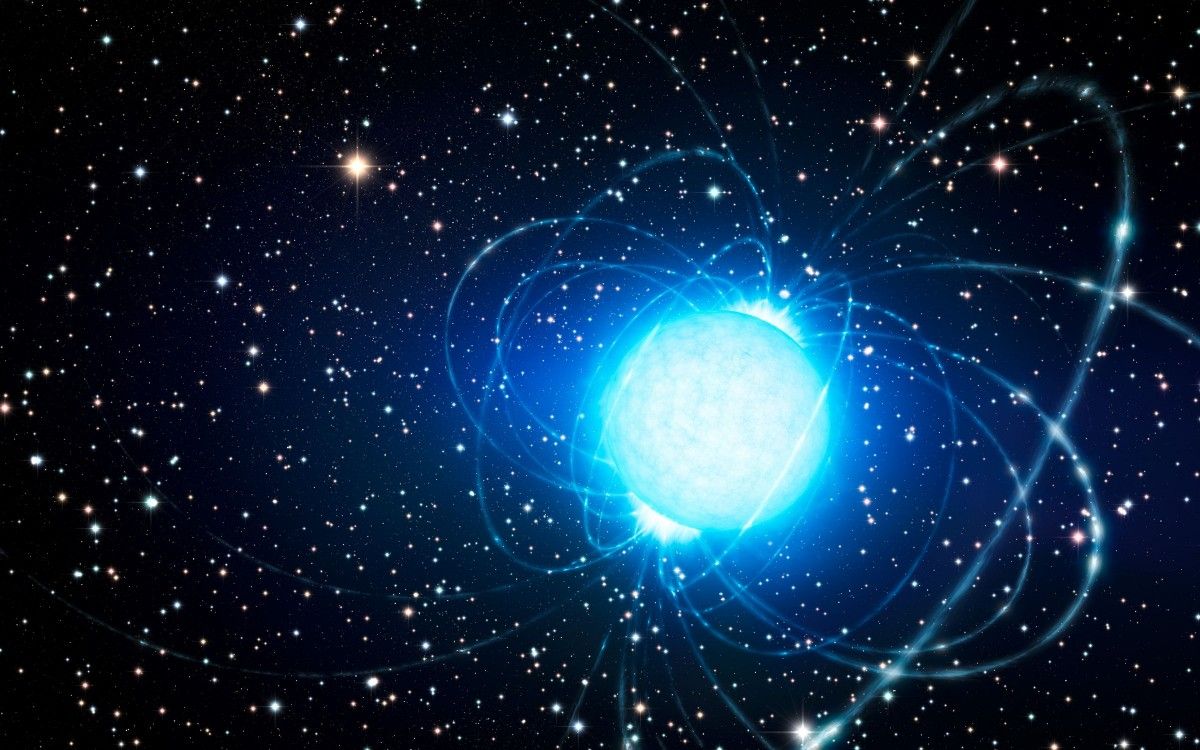
In 1937 Pyotr Kapitsa and John F. Allen discovered a strange behavior of ultracold liquids known as superfluidity. A superfluid is a fluid with no viscosity, basically a frictionless liquid. Without viscosity, the fluid has no way to dampen its motion. Because of this, superfluids have some pretty unusual behaviors. If a bit of superfluid is suspended in an open container, it will creep up along the walls, then drip down to a lower container. It can flow through tiny pores that regular liquids can’t, and can create fountains that could flow forever. This seeming defiance of gravity and common sense is due to the fact that its behavior is rooted in quantum physics. Though it is not a truly quantum state such as a Bose-Einstein condensate, it shares some commonality with it. In the lab, superfluids are only seen at temperatures barely above absolute zero. The most common example, helium-4, becomes superfluid when cooled below 2.17 K. So it might seem odd that superfluids are also found in the hot interiors of neutron stars.
A neutron star is a stellar remnant formed with a star runs out of hydrogen and heavier elements to fuse. After a star explodes as a supernova, the remaining core of the star collapses under its own weight to the point that only the pressure of nuclei can counter the force of gravity. A neutron star has a mass of about two Suns, but are only about 20 kilometers in diameter. They have a dense atmosphere of carbon only a few centimeters thick, and a thin crust of iron nuclei. In the interior of a neutron star, nuclei are pushed together ever more tightly, and reach a point where the nuclei can’t hold themselves together. As a result, individual neutrons “drip” out, and sink into the star’s core, forming a neutron fluid. As a neutron star cools, this neutron fluid transitions to a superfluid state. This happens not at a few degrees Kelvin, but at 500 to 800 million Kelvin. The interior of a neutron star is a hot superfluid sea.
